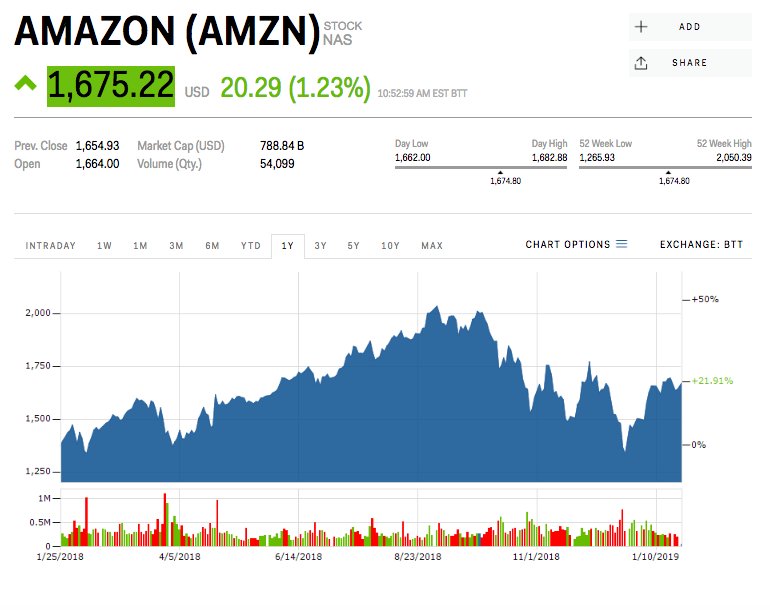 maroke/iStock
maroke/iStock
- While Amazon has successfully disrupted many industries, one space where the tech giant is not yet a major threat is beauty retail.
- Consumers are opting for specialty retailers such as Sephora and Ulta Beauty as their shopping destination for prestigious beauty brands, according to Jefferies analyst Stephanie Wissink.
- Amazon can sell beauty products within the price sweet spot of $20-$30, but brand access is the key to winning customers, Wissink said.
- Watch Amazon trade live.
Amazon has successfully disrupted a number of industries, from grocery stores to healthcare, but one space where the tech giant is not yet a major threat is beauty retail. For Amazon to build a more robust beauty category, broader access to prestigious brands is the key, Jefferies says.
“Amazon is a viable competitor, with $1 billion in annual beauty and personal care sales, but still small and developing versus what we deem to be a real threat to traditional beauty distribution,” Jefferies analyst Stephanie Wissink said in a note out Friday.
The beauty industry is controlled by seven major conglomerates — Estée Lauder, L’Oréal, Unilever, Procter & Gamble, Shiseido, Johnson & Johnson, and Coty. But, the only way consumers can buy most of those brands on Amazon is through the third-party marketplace where there are no controls on price or experience. Some brands such as Coty are available on Amazon, but with fewer choices.
As a result, beauty lovers are opting for specialty retailers such as Sephora and Ulta Beauty as their shopping destinations because they can find the brands there, Wissink added.
Amazon’s current effort for getting into beauty is focused on cheaper products. Recently, Amazon unveiled a lineup of makeup products under its private label “Find” on its UK sites. The products are sold in bundles rather than individually, and priced under $20.
Benefiting from its reach and demand-harvesting attributes, Amazon can sell beauty products in the price sweet spot of $20-$30, however, brand access is the key to winning customers in the beauty space, according to Wissink.
“Should an increased number of prestige brands including EL, OR FP, Shiseido, etc. opt into Amazon’s lux domain, this would challenge the pace of share transfer to specialty, esp replen purchases,” Wissink said.
“Amazon’s B2B pro beauty platform, if successful in growing pro brand access, would meaningfully challenge SBH’s network of stores servicing indep salons.”
Amazon was up 21% in the past year.
 Markets Insider
Markets Insider

